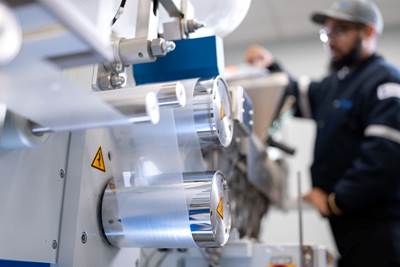Tackling Hazardous Waste Violations
Here's a look at some of the most common hazardous waste violations in electroplating facilities, and what can be done to prevent or correct them...
For electroplaters, having a complete understanding of your state's regulations is nothing short of imperative. The failure to comply with state and federal hazardous waste management regulations can lead to fines and penalties, not to mention risk of employee injury. Here's a look at some of the more common violations and what can be done about them. Bear in mind that many regulations vary from state-to-state. You should contact your state EPA for specific details about the regulations in your area.
Tank Systems
If you use tanks to store or treat hazardous waste, you must keep an up-to-date, written, certified assessment of all hazardous waste tanks and associated ancillary equipment (e.g., piping, pumps, etc.). It must be on file at the same facility where your tanks are located. States require that a qualified individual, such as a professional engineer, must certify the assessment, attesting that all written statements in the assessment are accurate and the tank system is suitably designed to safely store or treat hazardous wastes. In most states, tanks that are part of a wastewater treatment system are exempt.
Segregation of Incompatible Wastes
If cyanide containing waste accidentally mixes with acidic waste, it will generate poisonous hydrogen cyanide gas that could harm - or even kill - you or your employees. Containers holding incompatible (such as cyanides from acids, caustics from acids, oxidizers from organics, flammables and combustibles) or reactive wastes, whether or not those containers are being used to treat the waste, must be separated by means of a dike, berm, wall, or other device that is capable of keeping the wastes from mixing if a spill occurred. You must segregate all tanks or containers holding cyanide-bearing waste from all tanks or containers holding incompatible wastes. You must also make sure that all tanks or containers holding cyanide-bearing wastes are segregated from any containers holding acidic material, whether or not the acidic material is waste.
Treatment
You must obtain a permit, or grant of authorization, from the appropriate regulatory agency before you treat any hazardous waste. All hazardous waste treatment activities require this, unless the specific treatment activity is specifically exempt or excluded. Examples of hazardous waste treatment include cleaning plating bath filters to remove plating bath residues, electrowinning of cyanide-bearing wastes, evaporation of liquid wastes by heating or any other activity designed to change the hazardous characteristics or properties of the waste.
Training
You must train all of your employees who manage hazardous waste, and you must maintain employee-training records at your facility, including records of on-the-job training. Training should include a program of classroom instruction or on-the-job training that teaches each employee involved with hazardous waste management to perform his or her duties in a way that ensures the facility's compliance with applicable regulatory requirements.
Generally, employees are to be trained in hazardous waste management procedures (e.g. container and tank labeling, inspection of hazardous waste tanks, operation of waste treatment units, etc.) and in how to respond to hazardous waste spills and emergencies that could occur at the facility.
Secondary Containment
You may have to provide secondary containment for your hazardous waste tank system, depending on the age of your facility, the date your tank system was installed and the types of waste managed in the tanks. You should review the regulations in your state to determine if your tank system needs secondary containment. If your tank system requires secondary containment, then the written certified tank system assessment described above must include a description of your secondary containment system. It must contain written statements, certified by a qualified individual (such as a professional engineer) indicating that your secondary containment is in compliance with applicable regulatory requirements.
Some states, such as California, require that hazardous waste tank systems used to treat waste under permit by rule have secondary containment. This includes almost all wastewater pretreatment systems for electroplaters and metal finishers. Though most other states do not require this for wastewater pretreatment systems, it is recommended.
Managing Spills
When a material is spilled onto the ground or onto the floor of your facility, it becomes a waste if - as a result of the spill - it can no longer be used for its original purpose. For instance, if a plating solution spills on the floor of your facility and you cannot return it to your plating bath, the spilled solution becomes a waste. If the plating solution is hazardous, then the spilled plating solution is a hazardous waste. You must clean up all spilled hazardous waste immediately when the spill occurs.
Even if the spilled material can be reused, you still must clean it up immediately after the spill occurs so that it does not harm your employees or the environment. Failure to clean up spilled hazardous waste is considered a serious violation because it is potentially harmful to employees and to the environment. Any spilled hazardous waste should be placed in an appropriately labeled container or hazardous waste tank and either treated onsite (if the facility is authorized to treat the waste) or transferred off-site to a facility that is permitted to treat, store or dispose of the waste.
Most hazardous waste tanks also must have secondary containment. You must not allow any spilled liquids, whether or not they are hazardous, to remain in the secondary containment of your hazardous waste tank system. While you must clean up spilled hazardous waste and hazardous materials from the floor of your facility immediately when the spill occurs, you must clean up all spilled liquids from your secondary containment, whether or not the spilled liquid is a hazardous waste, within 24 hours of when the spill occurs or in as timely a manner as possible.
Container/Tank Labeling and Management
Containers and tanks containing hazardous waste should be clearly marked, "HAZARDOUS WASTE." Make sure that you are familiar with your state's regulations concerning container and tank labeling. Depending on where you do business, you may be required to label your tanks with one or more of the following types of information:
a. The name and address of your facility
b. The name of the person who operates the treatment unit
c. The date the first drop of waste was placed in the tank or container (the accumulation start date)
d. The identity or source of the waste (for example, spent plating solution)
e. What makes the waste hazardous (for example, does it contain cyanide, dissolved metals, or acid?)
f. The hazardous characteristic of the waste (is the waste toxic, corrosive, ignitable, or reactive?)
g. The physical state of the waste (is it liquid or solid?)
Many states also require that hazardous waste storage areas be inspected on a regular basis (e.g. weekly) for leaks and for deterioration caused by corrosion or other factors. Findings should be recorded in a container-inspection log.
References:
1. California Department of Toxic Substances Control. "The Eight Most Common Hazardous Waste Management Violations at Electroplating Facilities and How to Prevent or Correct Them." (11 August 2004).
Related Content
Hubbard-Hall Acquires BioConversion Technology
The acquisition adds experience and biologics to the AquaPure product line.
Read MoreTop 5 Areas to Consider Automation of Plating Operations
Automation for finishing operations can lead to improvements in process time, repeatability and consistency of quality. Yet, processes that make sense to explore for these operational efficiencies may not always be readily apparent.
Read MoreNASF/AESF Foundation Research Project #120: Electrochemical Destruction of Perfluorooctanesulfonate in Electroplating Wastewaters - April 2022-March 2023
This NASF-AESF Foundation research project report covers project work from April 2022 to March 2023 at the University of Illinois at Chicago. The overall objective of this work is to utilize a cost-effective reactive electrochemical membrane (REM) for the removal of PFAS from synthetic electroplating wastewater. Initial results for the oxidation of PFOA with three different catalysts are discussed.
Read MoreNASF/AESF Foundation Research Project #122: Electrochemical Approaches to Treatment of PFAS in Plating Wastewater - 7th Quarterly Report
The NASF-AESF Foundation Research Board has selected a project on addressing the problem of PFAS and related chemicals in plating wastewater streams, studying PFAS destruction via electrooxidation and electrocoagulation. Our last report described the results from experiments of EO with a Magnéli phase Ti4O7 anode on the degradation of eight perfluoroalkyl acids (PFAAs). In this seven quarter report, we describe work to further explore how the degradation of different PFAAs are related to their molecular structures.
Read MoreRead Next
Education Bringing Cleaning to Machining
Debuting new speakers and cleaning technology content during this half-day workshop co-located with IMTS 2024.
Read MoreA ‘Clean’ Agenda Offers Unique Presentations in Chicago
The 2024 Parts Cleaning Conference, co-located with the International Manufacturing Technology Show, includes presentations by several speakers who are new to the conference and topics that have not been covered in past editions of this event.
Read MoreDelivering Increased Benefits to Greenhouse Films
Baystar's Borstar technology is helping customers deliver better, more reliable production methods to greenhouse agriculture.
Read More
















.jpg;maxWidth=300;quality=90)











